The thoracic vertebrae
We are no longer building saddle trees, but we have two videos about how Western saddles fit horses available on our westernsaddlefit.com website.
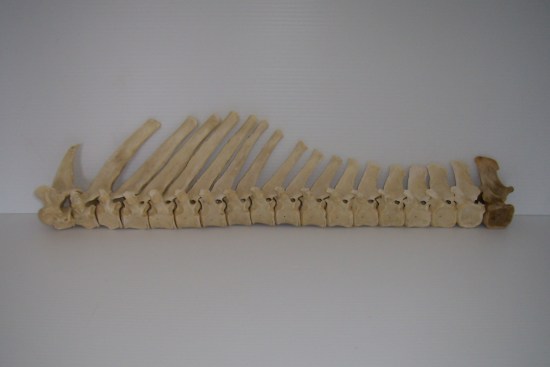
Moving down the back from the cervical vertebrae, the next section is the thoracic vertebrae, called that because they are directly above the thorax, or chest cavity. There are usually 18 of them, and they are really interesting vertebrae. Their dorsal spinous processes really vary depending on where they fall in the line up of T1 to T18, and you could almost put them in order just based on those alone. However, they have other unique features as well, such as the three facets on each side for the rib attachment. Lining them up straight like this is a good way to compare them, but doesn’t show you their real orientation in a living horse. And as to why the last one looks different, that is a long story that has something to do with lack of freezer space, a hot summer and not dealing with bones till October…
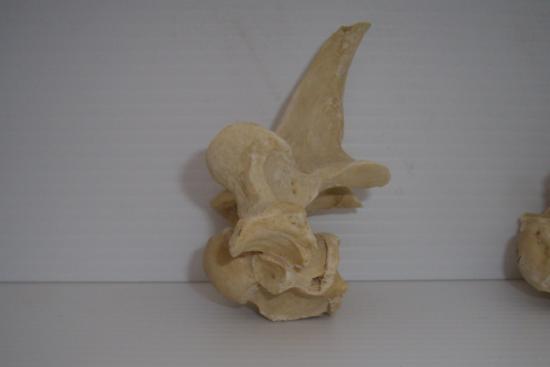
T1 is unique, being as it is the transition from cervical to thoracic vertebrae. Its dorsal spinous process is taller than C7, but less than half the height of T2, and much more pointed than any of the others. The articular processes (the attachment points to the next vertebra) on the front are quite large, like the ones on the cervical vertebrae, but the ones that connect to T2 are already smaller, and they continue to decrease in size as you go back along the thoracic spine. The first rib attaches to the front of T1.
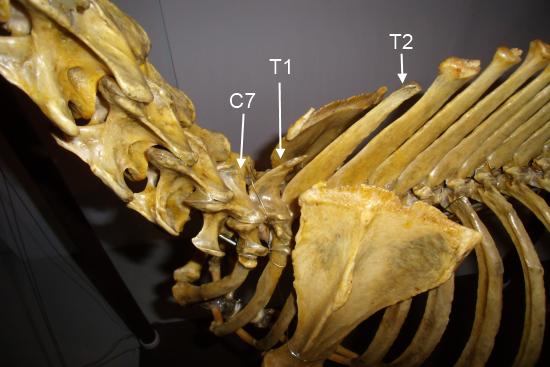
Because of its position at the bottom of the base of the neck, T1 is buried too deep inside the horse to feel. In fact, you can only feel T2 on some horses, and then only if their head is down. T3 is often the first vertebra you can find. To do this, feel along the top of the spine. You will feel slight bumps with hollows between them, especially over the withers. (Depending on the muscular structure of the back, you may or may not be able to feel these all the way down the spine.)
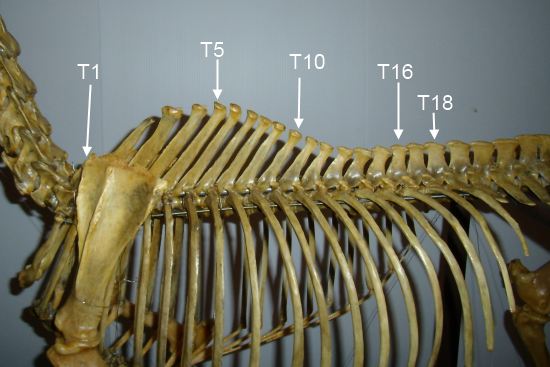
While T3 or T4 usually have the longest dorsal spinal process, due to their position in the body it is usually T4 or T5 that form the tallest part of the withers. From there back, the processes decrease in height until you get to about T15. Because of the position of the vertebrae in the body, the longest spinal process is not necessarily the tallest part of the withers, nor is the shortest spinous process the lowest point of the back. The dorsal spinous processes at the front of the thorax lean backward with the greatest amount of lean being on T2. From there they gradually get more and more stood up till they get to the anticlinal vertebra, anticlinal meaning “not inclined”. It stands straight up and down. This is usually T15 or T16, but in some horses it is as far forward as T14. Behind that, the dorsal spinous processes lean ahead. This is really important in how the spine functions.
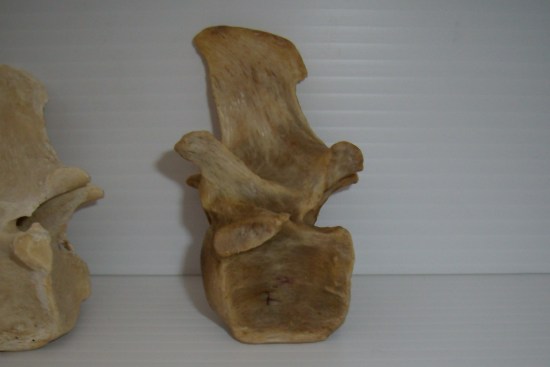
T18 is also a vertebra you can pick out of a pile and know what it is (and not just because it is a different color!). It only has the facet for the rib attachment on the front. For comparison, check out what the back (right) end of this vertebra looks like compared to the one that is on the left of the picture.
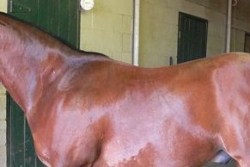 |
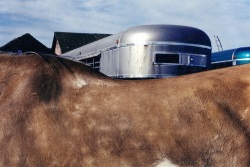 |
The total overall length of the dorsal spinous processes varies between horses, and the rate at which they get shorter also varies as does the amount of muscle around them. Thus you get horses with minimal wither height above the muscle of their backs and horses with really, really tall withers. With the latter, of course, it is more important make sure the gullet is tall enough to clear the spine. You also get horses with withers that drop off quickly versus ones that “go back forever”. Again, the latter ones are more of a concern for clearance because it is not only gullet height that is a concern, but hand hole height and for some horses, even the clearance of the ground seat right behind the fork.
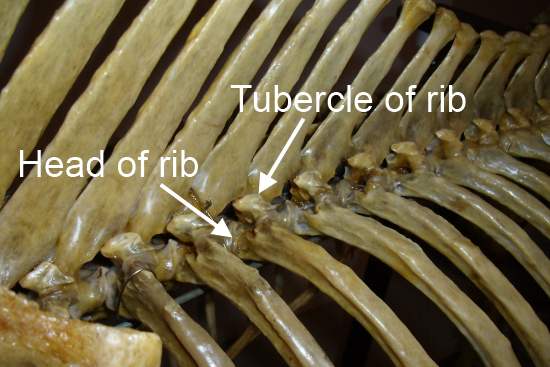
Ribs don’t have just one attachment point at the top. They have the head, which is attached between the vertebrae. They also have a tubercle, which is another name for a second stickie-outie-thingie on a rib that attaches higher up onto the relatively short transverse process of the vertebra.
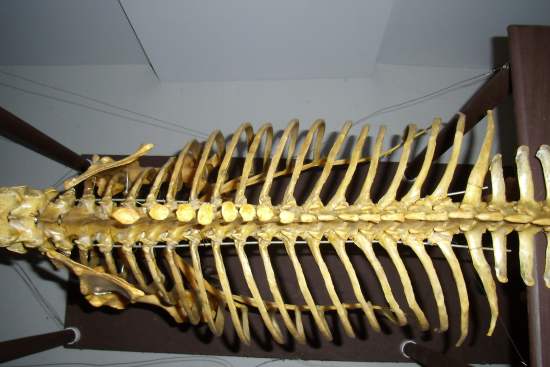
With the ribs coming off the sides of the thoracic vertebrae and the chest comprising a large percentage of the area under the saddle, it is obvious that the ribs form the bony support for the saddle over the thorax. They are also the support for the muscles over and around the thoracic vertebrae and the ribs, so the shape of the ribs – “well-sprung” versus “slab sided” – affects the size and shape the tree will need to be to fit well. However, the shape and amount of muscle is also very important in how the saddle fits. After all, the saddle doesn’t sit on the bones. It sits on the muscle. And how that muscle, with its bony support, is shaped is the shape we are trying to fit with our saddle trees.
So how does the shape of the vertebrae affect the changing shape of the back? Well, that will have to be another post…
